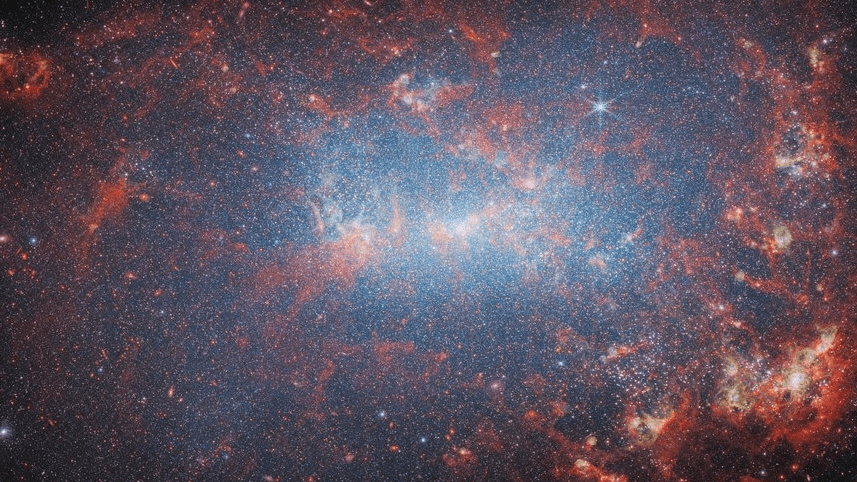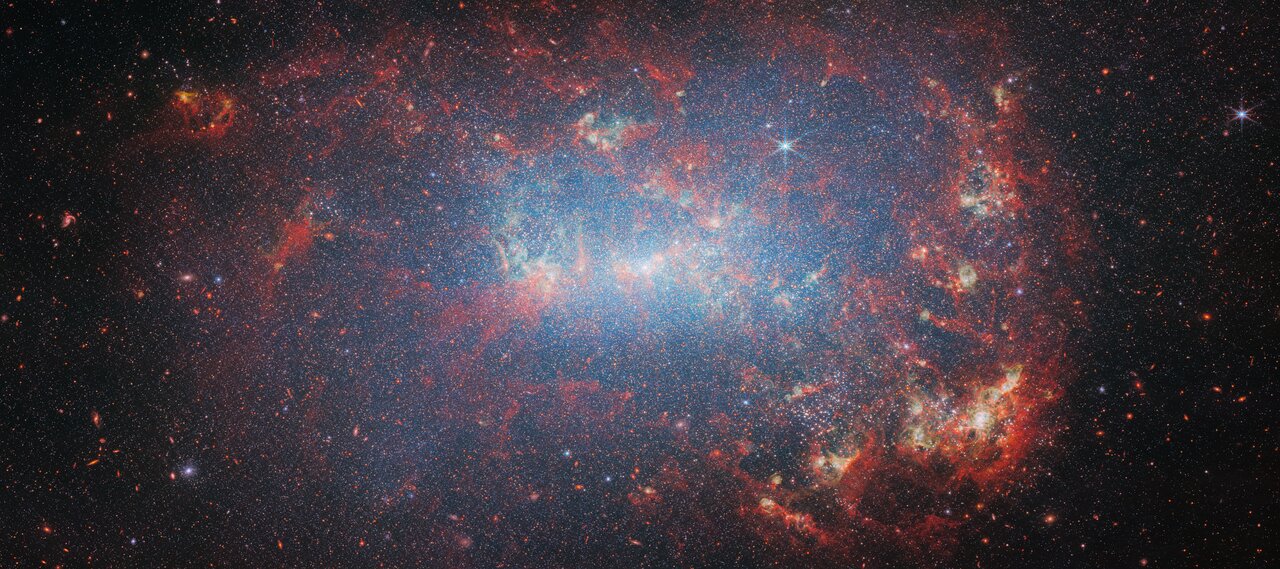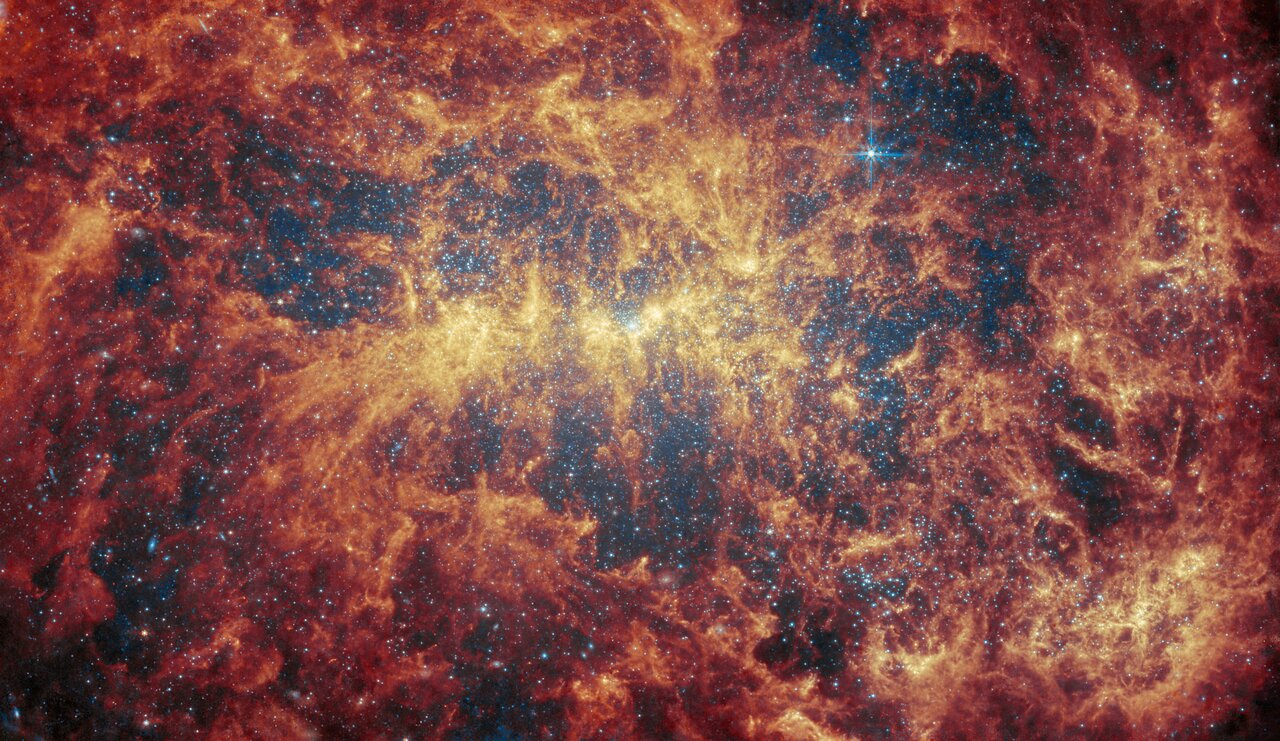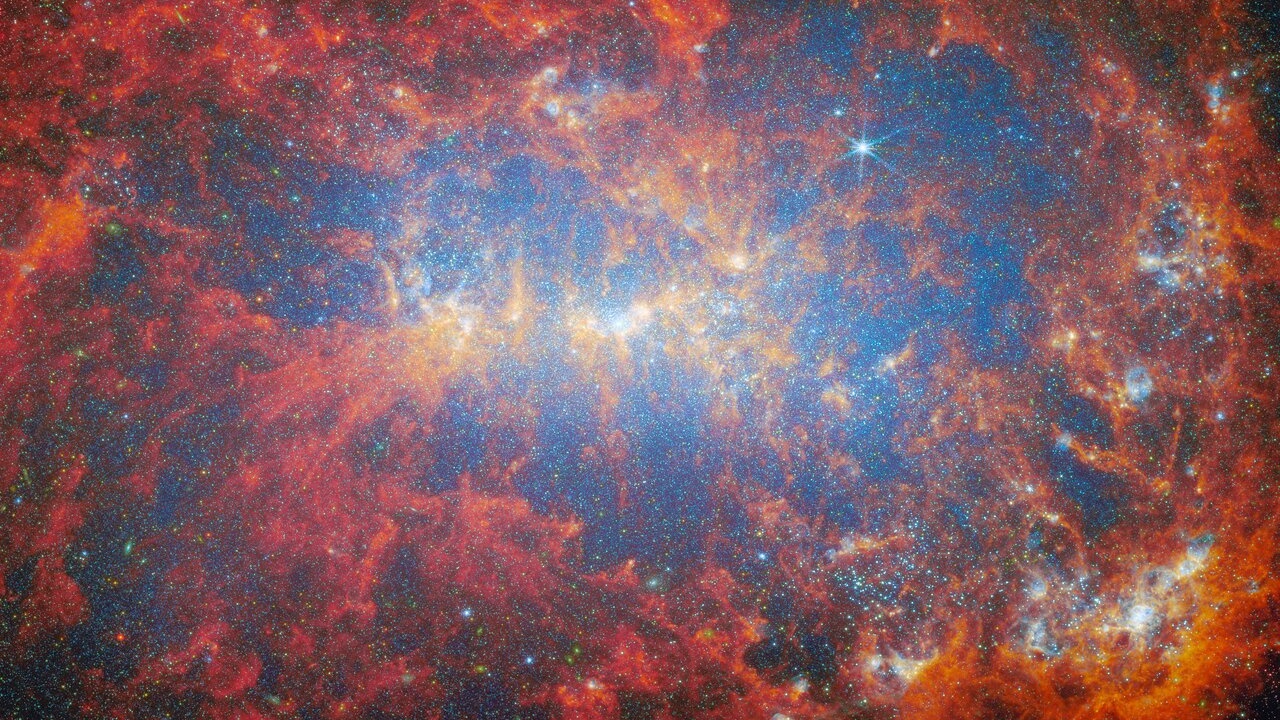
The dwarf galaxy NGC 4449 is the star of the show in the James Webb Space Telescope's latest cosmic portrait.
Located 12.5 million light-years away in the constellation of Canes Venatici, the Hunting Dogs, NGC 4449 has much in common with our very own Large Magellanic Cloud (LMC), the satellite galaxy orbiting the Milky Way. Both are small and irregular in shape and each has a distinctive bar running through its center. However, whereas the LMC has one extreme region of star formation, which is the 30 Doradus region famously known as the Tarantula Nebula, NGC 4449 has enhanced star-forming rates across its length and breadth. Indeed, there's so much star formation going on that NGC 4449 is described as undergoing a "starburst."
Related: James Webb Space Telescope spots most distant and oldest black hole collision ever seen
Starbursts happen when the molecular hydrogen gas that fills a galaxy is stirred up by a gravitational interaction, or a collision, with another galaxy. NGC 4449 is part of the M94 Group of about two dozen galaxies, so it has several neighbors with which to interact.
Indeed, in 2012. a professional-amateur collaboration led by David Martinez-Delgado of the Max Planck Institute of Astronomy in Germany and featuring the work of several notable amateur astrophotographers, as well as observations by the eight-meter Subaru Telescope on Mauna Kea in Hawaii, found evidence for just such an interaction. The team resolved a stream of stars pulled out of a smaller galaxy that had met its demise by being consumed by NGC 4449.
Though the small galaxy was ripped apart by the larger NGC 4449, it hasn't been going quietly. Gravitational tidal forces resulting from it being so close to NGC 4449 have created turbulence in the molecular gas across NGC 4449, causing large pockets to gravitationally collapse and form numerous young star clusters. Those star clusters, among other features, are visible in the JWST's latest image, constructed with a combination of data from its Near-Infrared Camera (NIRCam) and Mid-Infrared Instrument (MIRI). Operating at different infrared wavelengths (0.6 microns to 5 microns and 5 microns to 28 microns, respectively), they reveal different types of features in the galaxy.
The near-infrared view of NGC 4449 looks substantially different to the mid-infrared view. It’s important to note that all the colors are false colors standing in for the infrared wavelengths.

NIRCam shows a notable stellar bar that is replete in newly born clusters of hot stars, amid a background of older stars whose combined light shows as a diffuse blue glow. Dusty tendrils ring the bright center, marking star-forming regions of molecular gas ionized by radiation from newborn stars that reside in clusters. Those clusters are represented by compact blue regions ensconced in the gas.
MIRI's image captures the dusty skeleton of NGC 4449, which traces the bar but also appears more densely concentrated around that bar than the material visible to NIRCam.

Within the dust, indicated by an orangey-red color, are polycyclic aromatic hydrocarbons, known as PAHs for short. These carbon-based molecules are the building blocks of interstellar dust grains and play a key role in cosmic chemistry and in spreading organic material across the galaxy. Bright yellow areas are locations of active star formation, and bright blue spots signal a myriad of sparkling stellar bodies in the galaxy.
Combined, the NIRCam and MIRI data present a wonderful snapshot of a galaxy undergoing a tumultuous phase that will shape it for billions of years to come.

NGC 4449 is a preview of what may one day occur in the LMC, should its interactions with its sibling, the Small Magellanic Cloud, or even our Milky Way, become too great. NGC 4449 is also a modern-day version of the small galaxies the JWST is also finding existed in the early universe. Those early dwarf galaxies were the building blocks of the larger galaxies we see today, and through their own starbursts, contributed a significant proportion of the ionizing energy required to bring the cosmic dark ages to an end. As such, NGC 4449 is a unique window into both the past and future of galactic evolution.







